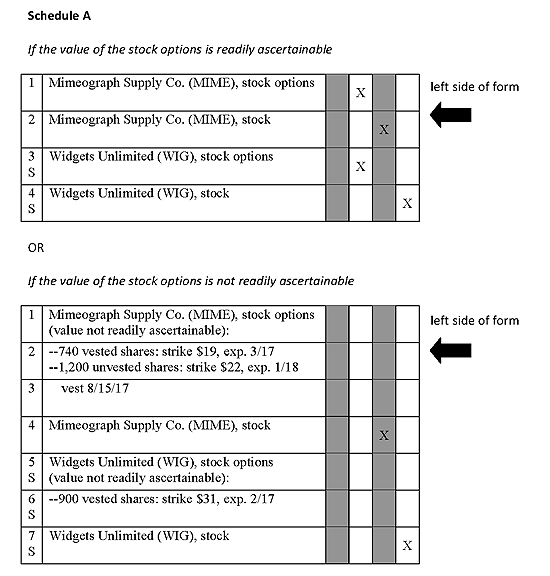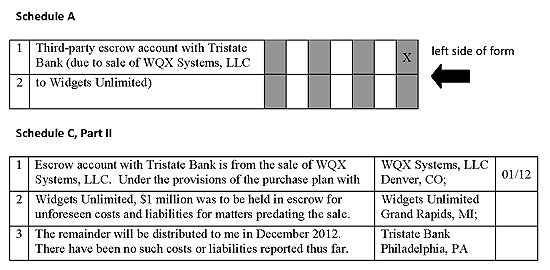Government Ethics Part I Assets and Income
Post on: 14 Июнь, 2015 No Comment

I heard that under the regulation I do not have to report any mutual funds that I, my spouse, or my dependent children own. Is that true?
Not completely. The new regulation eliminated only the requirement to report diversified mutual funds. You still must report the names of the sector mutual funds in which you, your spouse, or your dependent children own shares.
What is a sector fund?
A sector fund is a mutual fund that concentrates its investments in an industry, business, single country other than the United States, or bonds of a single State within the United States. Please consult your ethics official if you have any questions.
I am still not sure if I understand the difference between a diversified mutual fund and a sector mutual fund. It would be easier for me simply to list all of my mutual funds. Am I prohibited from listing all of my funds?
No, you are not prohibited from listing diversified mutual funds and may do so if you choose to, or are not sure which funds are “diversified.”
Do I have to report all assets that I owned from January 1, 2013 through December 31, 2013 and all income that I earned during this period?
No. You have to report your assets (for example, stocks, sector mutual funds, bonds, and real estate) that are valued at more than $1,000 at the end of the reporting period (December 31, 2013) OR that produced more than $200 in income during the reporting period. For example, if you owned stock in ABC Inc. that was worth $3,000 on December 31, 2013, you must list ABC Inc. on the form.
I owned stock in a company in 2013, but I sold it before the end of the year. When I sold it, the stock was worth $2,000, and it earned $500 in capital gains. Because I no longer own it, do I still have to report the name of the company on the OGE Form 450?
Yes. Because the stock earned more than $200 in income during the reporting period, you must report the name of the company on the form even though you did not own the stock at the end of the reporting period. Also, you must check the box in the “No longer held” column to indicate that you no longer own this stock.
I am employed part-time as a professor at a local college. I’m paid only $500 for teaching one class. Do I have to list the college on my report?
Yes, if you earn more than $200 from this part-time employment, you have to list it on Part I of the form. In addition, you have to list it in Part III because your part-time employment as a professor is considered to be an outside position.
My spouse works outside the home and earned $75,000 during the reporting period. Do I have to list her employer on the form?
Yes. Because your spouse earns more than $1,000 from her employment, you must list her employer on the form.
Do I have to report the value of the assets I report on the form or the amount of income that I or my spouse earns?
No, you do not have to report this type of information.
I am a new entrant and am coming into the Federal Government from the private sector. I have a 401(k) with my former employer. Am I required to report the 401(k) on the form? If so, how do I report it?
You are required to report the underlying assets in the 401(k). If you wish to indicate that the asset is in a 401(k), you may type “401(k)” next to the entry. You do not have to report an asset in the 401(k) if it is a type of asset that is exempt from the reporting requirements. Suppose you have the following assets in your 401(k): three diversified mutual funds, a sector mutual fund, and stock in two companies. You have to list the full name of the sector mutual fund and the names of the two companies. You do not have to list the names of the three diversified mutual funds because diversified mutual funds are no longer required to be reported.
I have only diversified mutual funds in my 401(k). Do I have to report the 401(k) in Part I?

In this case, you do not. Because all of the underlying assets in the 401(k) are diversified mutual funds and because diversified mutual funds do not have to be reported, you are not required to list your 401(k) assets in Part I.
But you must list the 401(k) plan in Part IV because the plan is an agreement or arrangement with your former employer. In the first column, you will list the name of your former employer and the city and state in which it is located. In the second column, you will describe what will happen to the plan while you are a government employee. For example, if ABC Corporation is your former employer and you will keep the plan with that company, you will make the following entry in the second column: “I will keep my 401(k) plan with ABC Corporation.”
How do I report my investment in TIAA-CREF in Part I?
TIAA-CREF offers many investment options, such as annuities and mutual funds. First you must review your statements pertaining to your TIAA-CREF investments to determine exactly which investments you selected for your account. Then refer to the instructions in Part I and determine if any of the assets which you own fall into one of the categories of reportable information. For example, if your TIAA-CREF plan contains the TIAA Traditional Annuity, the CREF Stock Account, the TIAA Real Estate Account, and the CREF Real Estate Securities Fund, you are required to report the TIAA Traditional Annuity (an annuity), the TIAA Real Estate Account (a sector mutual fund), and the CREF Real Estate Securities Fund (a sector mutual fund). You are not required to report the CREF Stock Account because it is a diversified mutual fund.
In addition, you may need to report the TIAA-CREF plan in Part IV: Agreements or Arrangements. Please see the FAQs for Part IV for more guidance.
Do I have to report IRAs?
Yes. Each asset that is in an IRA must be reported if it meets the reporting requirements. You may indicate that the assets are in an IRA if you wish, but you are not required to do so. And remember, it’s not sufficient just to list “IRA” on the form. You have to report the underlying assets of the IRA.
Suppose you have an IRA with five assets: $500 in Vanguard Index 500; $3,000 in Fidelity Magellan; $2,000 Vanguard Health Care Fund; $6,000 in IBM; and $5,000 in Google. You must report the IBM and Google stock because they are each valued over $1,000. You also must report the Vanguard Health Care fund because it is a sector fund, and its value is over the $1,000 reporting threshold. However, you do not have to report Vanguard Index 500 or Fidelity Magellan. Even though the value of each fund is more than $1,000, they are exempt from disclosure because they are diversified mutual funds.
I have only diversified mutual funds in my IRA. Do I have to report the IRA in Part I?
In this case, you do not. Because all of the underlying assets in the IRA are diversified mutual funds and because diversified mutual funds do not have to be reported, you are not required to list your IRA assets in Part I.














